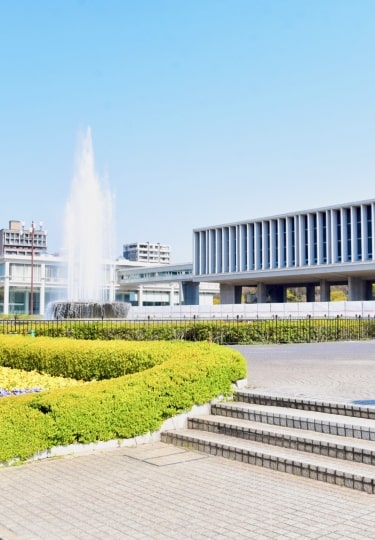Hiroshima, a city situated toward the southern end of Japan’s main island of Honshu, is synonymous for many with the atomic age, as this is where the first nuclear weapon was ever used on a human population center, during the Second World War.
Sobering memorials, like the Atomic Bomb Dome, should definitely be on your list of things to do in Hiroshima. That being said, reconstruction efforts after the war, combined with the city’s deep historical roots—exemplified by incredible sites like Hiroshima Castle, Itsukushima Shrine, and the Daishō-in Temple Complex—plus a rich culinary tradition make Hiroshima a cultural gem worth exploring beyond its tragic past.
Here are 14 things to do in Hiroshima, or nearby, to help you make the most of your time in this fascinating part of Japan.
Time Travel at the Rebuilt Hiroshima Castle
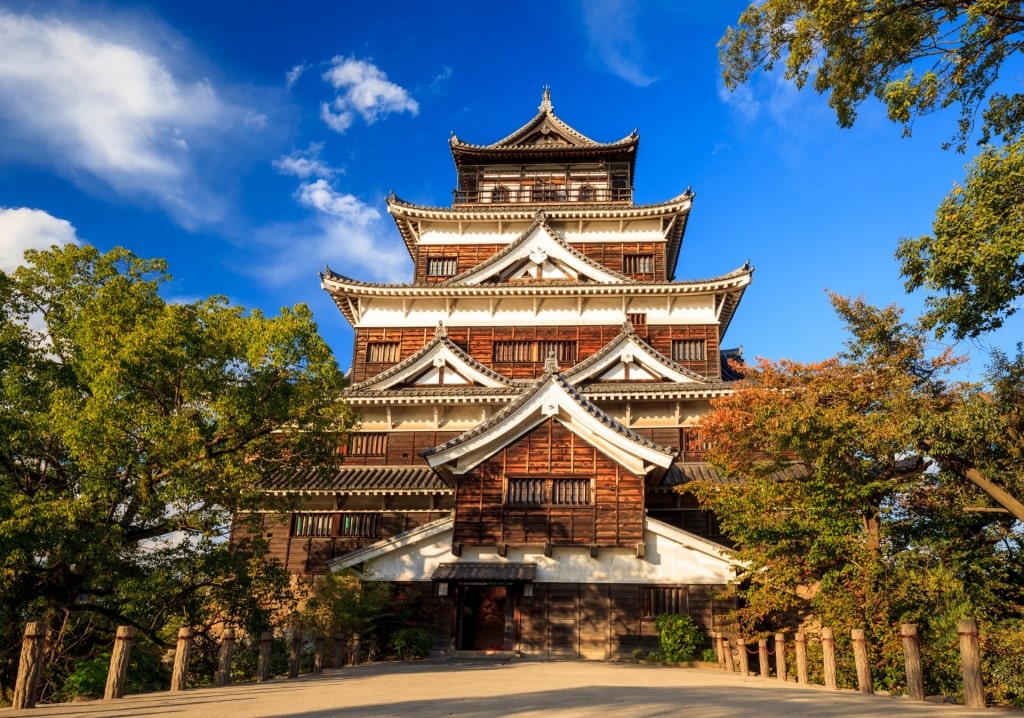
Hiroshima Castle
Travel back in time to Hiroshima’s rebuilt Hiroshima Castle. The original castle, from the late 16th century, was destroyed after the United States dropped an atomic bomb on the city in 1945, toward the end of WWII.
The hard-working people of Hiroshima set about rebuilding the historic building, located in the bustling city center (Naka Ward), in 1958. The castle’s main gate was restored in the 1990s in the Edo period’s artistically pleasing Yagura-mon style.
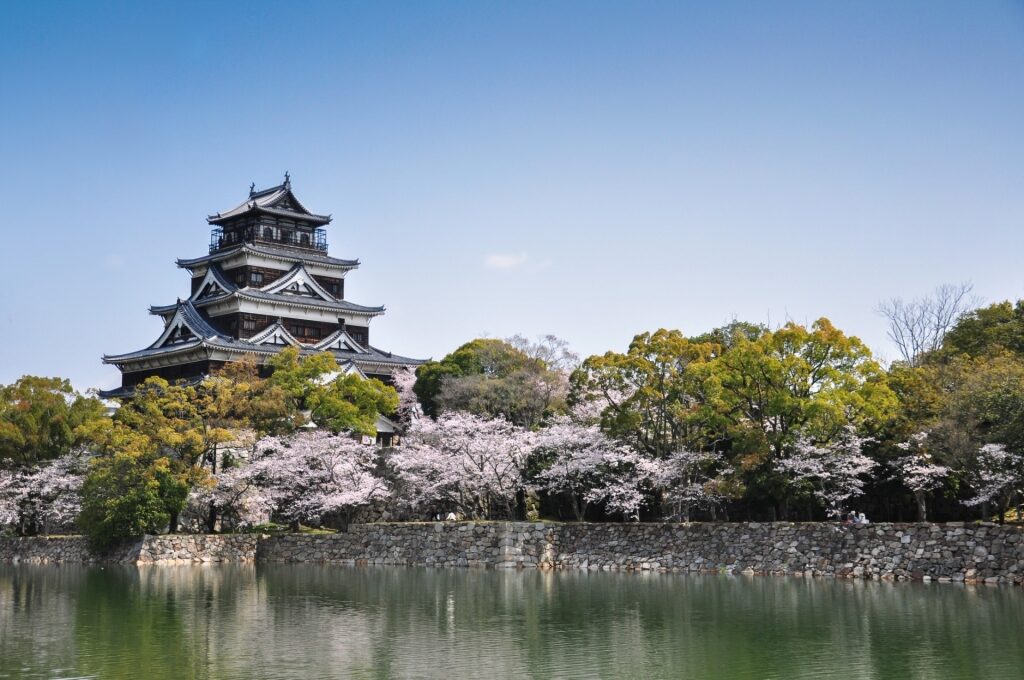
Hiroshima Castle
Today, the five-level “Carp Castle” (a nickname for the fortress) houses a history museum, largely focused on castles and samurais, a pretty garden showcasing cherry and plum blossoms in season, plus an impressive moat butting up against the stronghold’s stone walls. Leisurely walks around the castle grounds are highly recommended.
Ride the Ferry to Miyajima Island
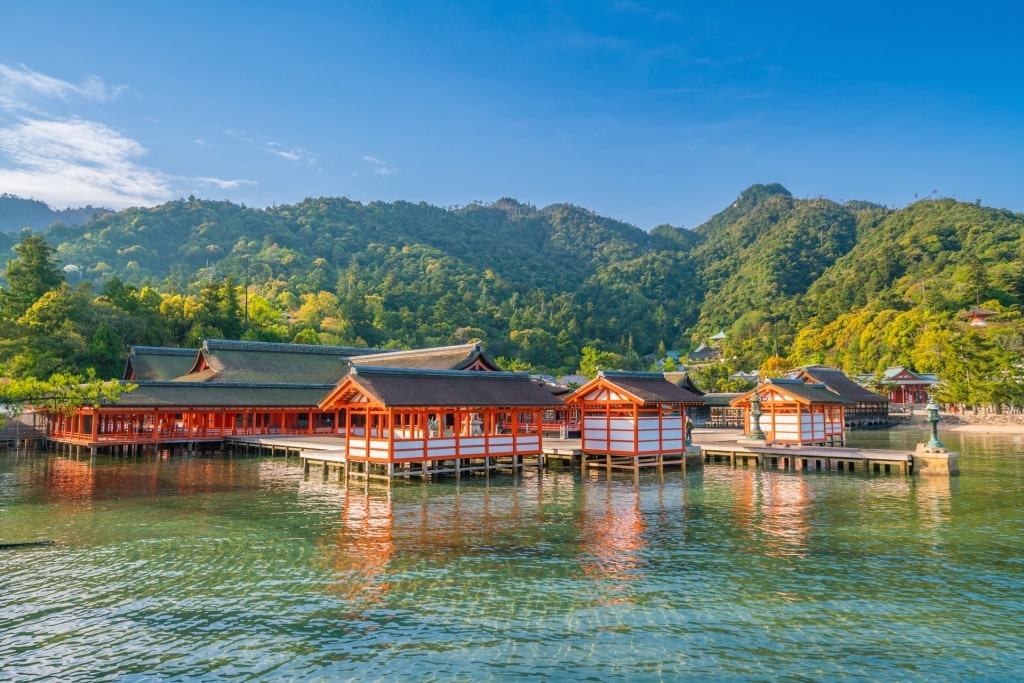
Miyajima Island
Riding the ferry to Miyajima Island, southwest of the city, should be big on your list of things to do in Hiroshima.
Miyajima Island is home to some of the most beautiful places in Japan, both historic and natural in character. Two of the most iconic structures to marvel at are Itsukushima Shrine and the exquisite red Torii Gates.
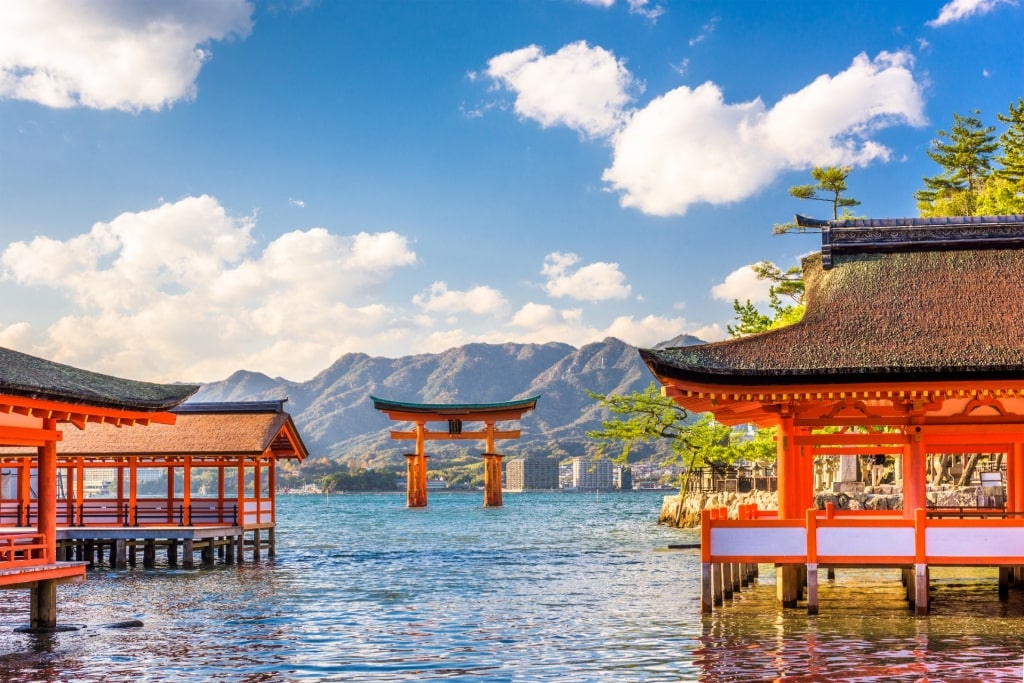
Itsukushima Shrine, Miyajima Island
Itsukushima Shrine, along with its red, wooden Shinto Torii Gates, appears to “float” above the small, shallow cove where the shrine is located. This effect is particularly noticeable come high tide—as the Japanese landmark was built over water.
Boardwalks link up the vermillion-colored buildings, including a prayer hall, which date back to the 12th century and make up the shrine complex. This is a wonderful place to wander around and soak in the history of some of Japan’s most thoughtful spiritual practices, along with the corresponding Shinto architecture.
Read: Awe-Inspiring Torii Gates in Japan
Explore a Darker Chapter in History at the Atomic Bomb Dome
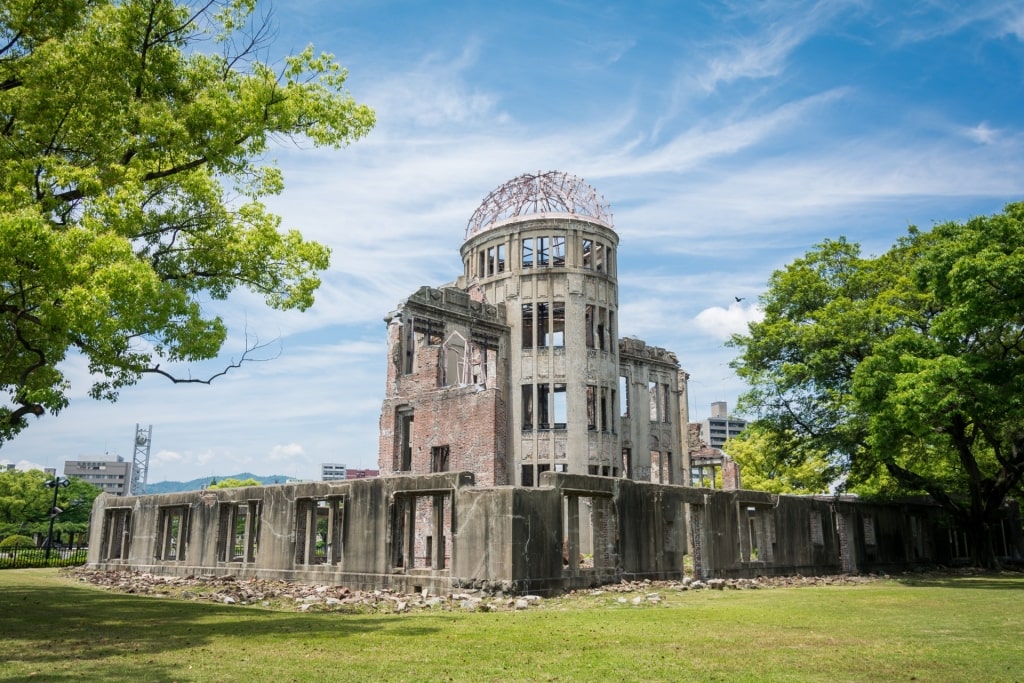
Atomic Bomb Dome
For a frightening, up-close view of the devastating power a nuclear weapon can unleash, you’ll find no better example in the world than Hiroshima’s Atomic Bomb Dome.
The Atomic Bomb Dome, a UNESCO World Heritage Site, is the cadaverous remains of a building that was once known as the Hiroshima Prefectural Industrial Promotional Hall.
On August 6, 1945, approximately 2,000 feet above the ground, a nuclear weapon detonated, leaving the building and the Japanese city of Hiroshima in ruins.
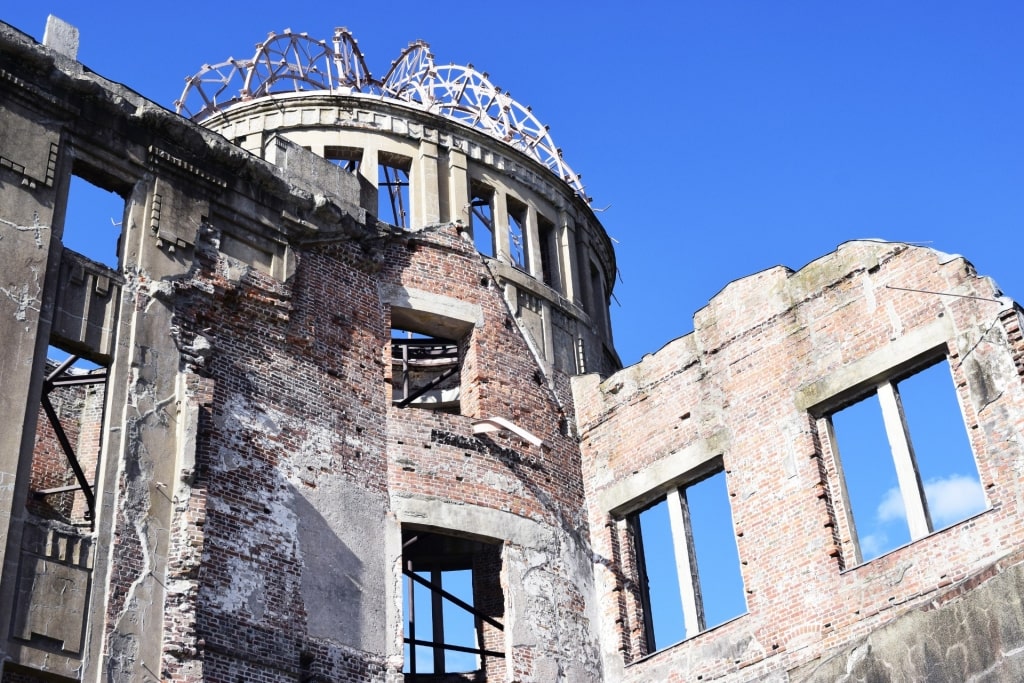
Atomic Bomb Dome
The original Dome was designed by Czech architect Jan Letzl. The husk that now remains is a place of remembrance where you can pay respect to those who died and suffered as a result of the nuclear blast, and subsequent radiation exposure.
The Atomic Bomb Dome is a stark and poignant reminder of the value of avoiding future nuclear war at all costs.
Rejuvenate Your Soul at Shukkei-en Garden
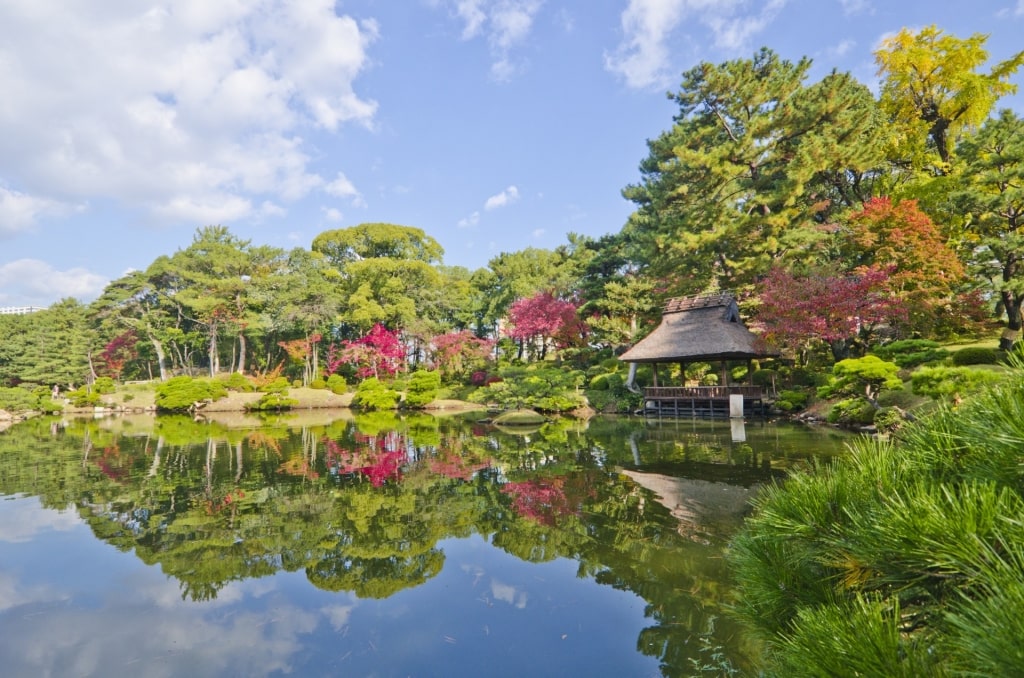
Shukkei-en Garden
Why not take some time out to rejuvenate your soul at the beautiful Shukkei-en Garden? The garden, within walking distance of Hiroshima Castle and Hiroshima Station, is a serene, cultivated space full of miniaturized landscapes, like small mountains and shrunken woodlands.
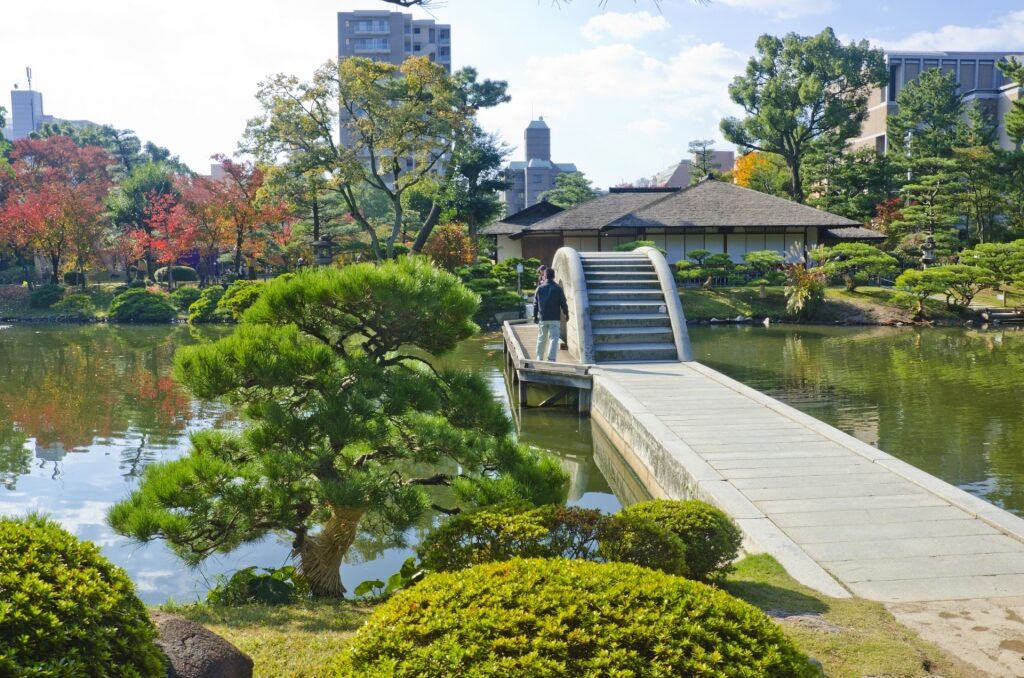
Shukkei-en Garden
The best way to experience this picturesque garden, built in 1620, is to roam along the main path, around the central pond.
You’ll pass by several tea houses along the way, where you can sit down with a warm beverage, or nibble on some sweets, while you continue to admire the soothing garden views.
Enjoy the Serenity of the Buddhist Daishō-in Temple Complex

Daishō-in Temple
When contemplating things to do in Hiroshima, consider immersing yourself in the serenity of the Vajrayana Shingon Buddhist Daishō-in Temple complex. The Japanese temple, like Itsukushima Shrine, is on Miyajima Island, which is also known as Itsukushima Island.
The lush temple grounds are located on the slope of Mt. Misen. This Shingon temple features sutra-inscribed prayer wheels, which you can spin for blessings.
You’ll also see the Henjokutsu Cave, with 88 icons connected to the 88 temples of the Shikoku Pilgrimage route, plus hundreds of stone statues of different Buddhist deities. Daishō-in is well worth a visit while you’re exploring Miyajima Island.
Stroll Through Miyajima Island’s Momijidani Maple Leaf Park
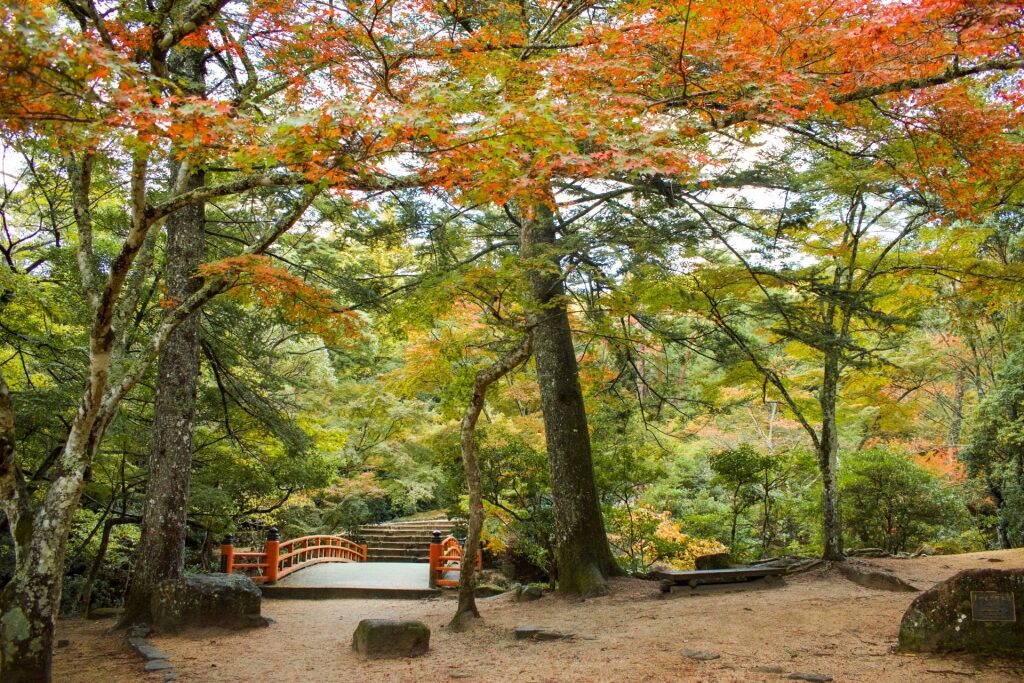
Momijidani Maple Leaf Park
Sticking to Miyajima, head over to Momijidani Park for another dose of Japan’s highly cultivated sense of the natural world.
The park, not far from Itsukushima Shrine, is next to the Momijidani River. This “maple valley” park’s 200 or so maple trees will accompany you during your rambles along broad paths, or across the park’s lovely footbridge, which crosses a gently tumbling stream. Some might describe the setting here as “divine”.
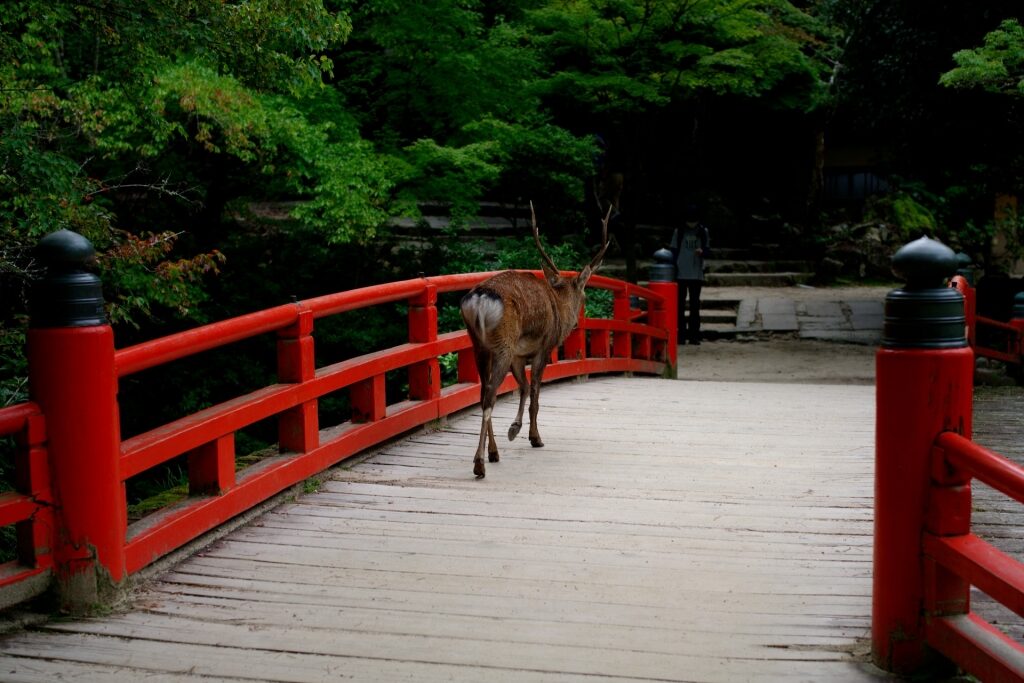
Momijidani Maple Leaf Park
Momijidani is also another location where you’ll likely encounter some of the island’s free-roaming spotted sika deer, which, according to Shinto belief, are considered to be sacred messengers of the gods.
Uncover the Horror of War at the Hiroshima Peace Memorial Museum

Hiroshima Peace Memorial Museum
Back in Hiroshima city center, for more insight into the terrible wartime devastation the nuclear bomb caused, try to spend some time at the Hiroshima Peace Memorial Museum, located at Hiroshima Peace Memorial Park (where you’ll also find the Atomic Bomb Dome).
The museum’s two main buildings are dedicated to the dropping of the atomic bomb, and the horrors that ensued during the aftermath. A visit here can be hard on the soul, with so much human suffering on display, but it’s an important part of history that should be retained, lest it be repeated.
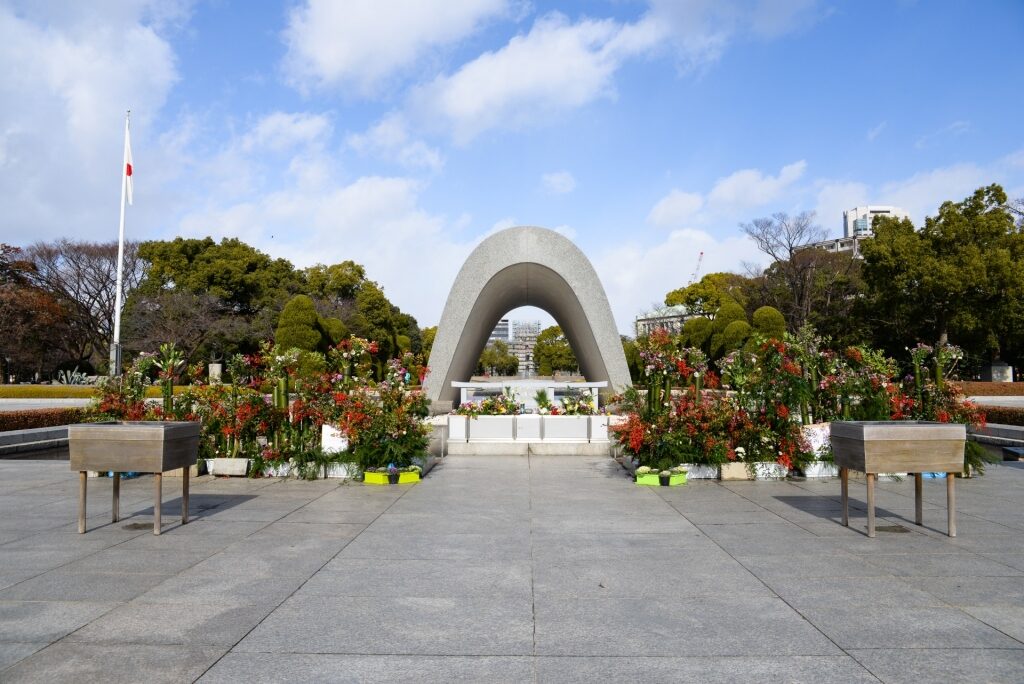
Hiroshima Peace Memorial Museum
Hiroshima Peace Memorial Park is also home to the Cenotaph (an empty tomb commemorating people who died during a war) for the A-Bomb Victims, built in 1952. This particular cenotaph contains more than 200,000 names.
“Fly” to Mt. Misen on the Miyajima Ropeway
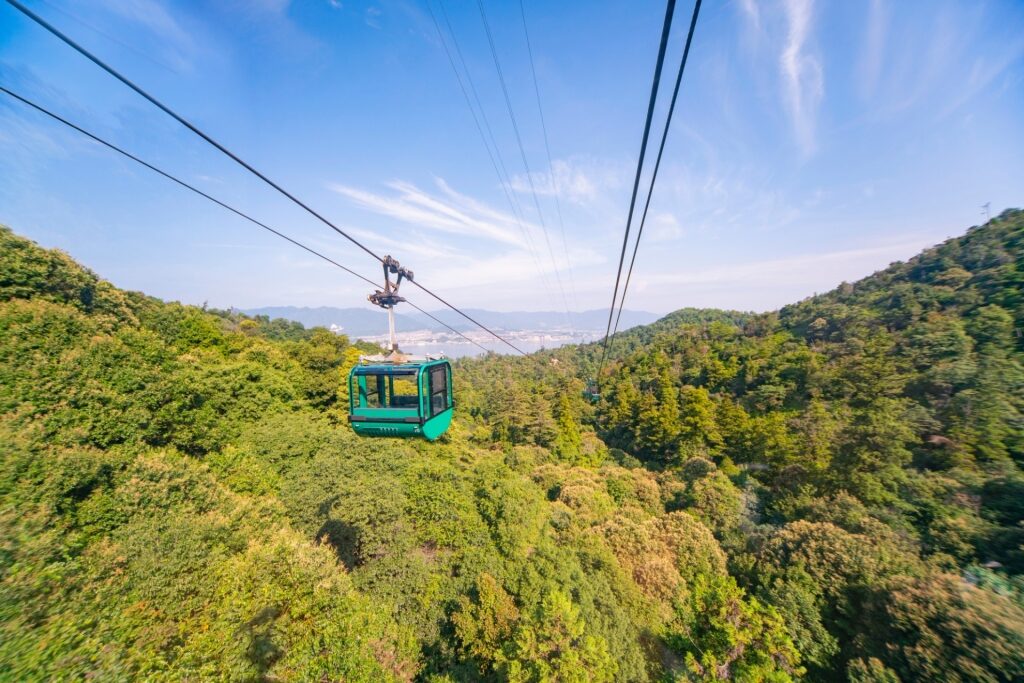
Miyajima Ropeway
On Miyajima Island, if you’re a fan of aerial views, you can work your way up to the top of sacred Mt. Misen, with its dense, protected old-growth forest, and different Buddhist halls.
And sure, you can opt for a two-hour hike to Miyajima’s highest point along the Daishō-in or Momijidani courses. But why not hop on the Miyajima Ropeway instead?
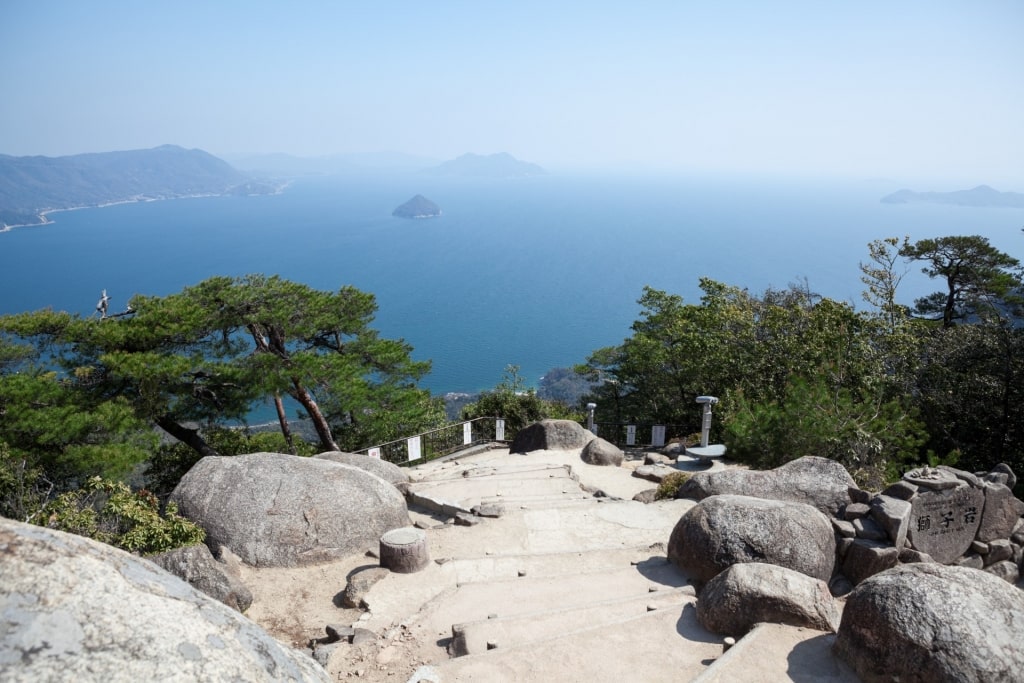
Shishiiwa Observatory
The ropeway, divided into two sections (you’ll have to transfer mid-way at Kayatani Station), will whisk you up to the summit of Mt. Misen.
There’s a bit of a hike from the terminus, Shishiiwa Station, to reach the Shishiiwa Observatory, but once you arrive, you’ll be rewarded with remarkable vistas of the Seto Inland Sea, and Hiroshima when the skies are clear.
Read: Best Hikes in Japan
Learn About Minesweeping and Submarines at the JMSDF Kure Museum
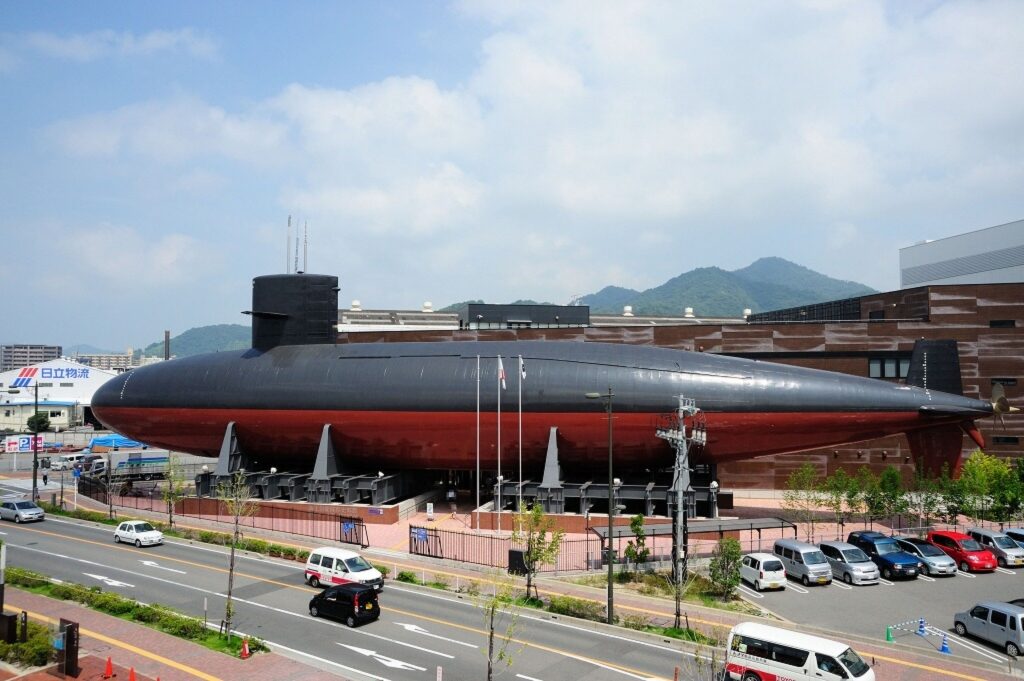
JMSDF Kure Museum Photo by nattou on Wikimedia Commons, licensed under CC BY-SA 3.0
For a quirky little side trip, swing by Hiroshima’s Japan Maritime Self Defense Force (JMSDF) Kure Museum—especially if you’re into post-WWII naval warfare and submarines.
One of the Defense Force’s main areas of operations over the years has been minesweeping. The seas around Japan were heavily mined during WWII and needed to be cleared after the war ended.
The first two floors of the museum are dedicated to minesweeping methods and technologies. The third floor focuses on submarines, with access to a decommissioned Akishio SS-579 submarine, resting next to the building, which you can climb around and explore for yourself.
Experience Kintai Bridge’s Sublime Beauty
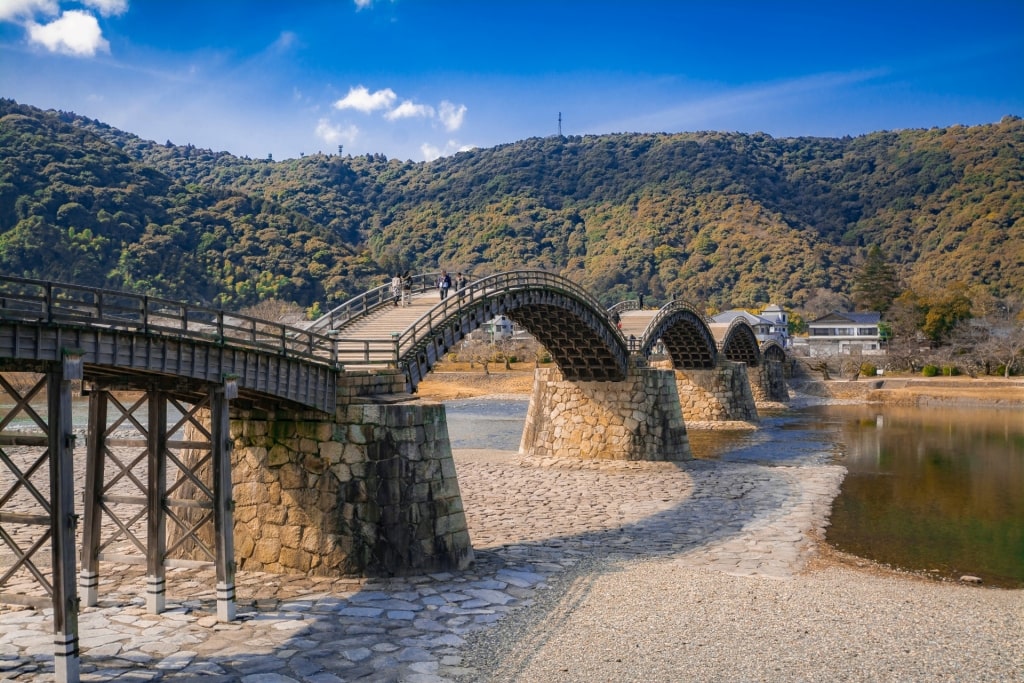
Kintai Bridge
Less than an hour by train from Hiroshima, to the southwest, you’ll encounter the city of Iwakuni, full of samurai history, and home to the celebrated Kintai Bridge.
Kintai Bridge, built out of different types of wood like chestnut and oak, is a five-arched bridge traversing the Nishiki River. The bridge, dating back to 1673, then reconstructed in the 1950s, is stunningly picturesque throughout the year—but especially pretty when the cherry blossoms that Japan is known for are flowering along the river.
While you’re in Iwakuni, after crossing the footbridge, you’ll enter Kikkō Park. You can gaze in awe at the historic residences here, where lords and samurai families once resided.
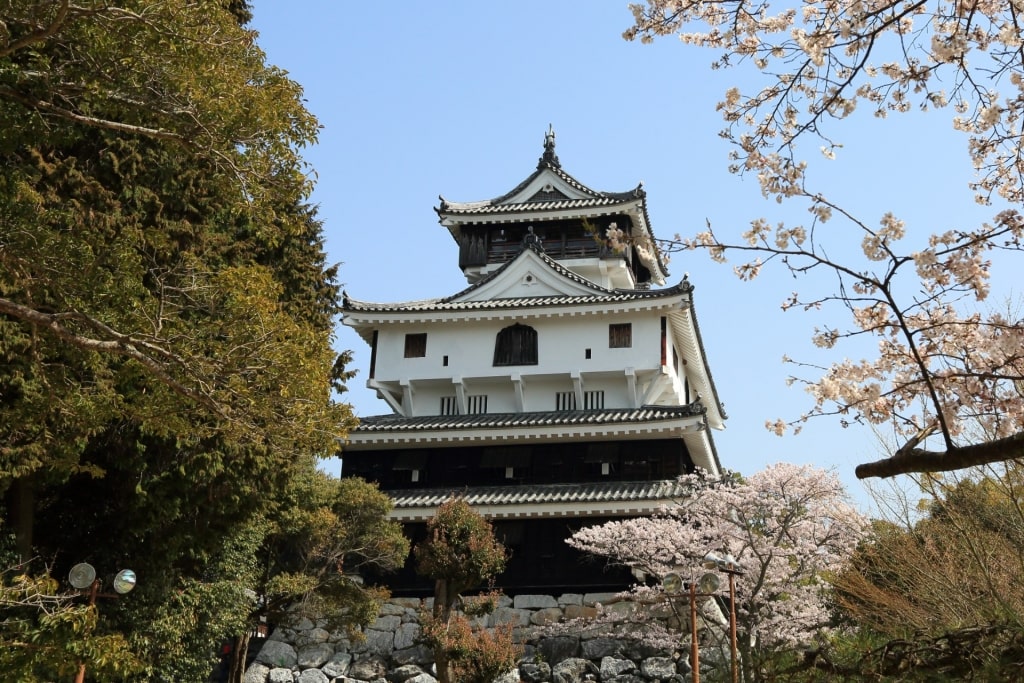
Iwakuni Castle
You can also ride the ropeway from the park up to Iwakuni Castle, a reproduction of the Kikkawa clan’s original home. The castle now houses many relics related to samurai culture and offers wonderful panoramas of Iwakuni below.
Read: Why Visit Japan in the Fall
Rev Your Engines at the Mazda Museum
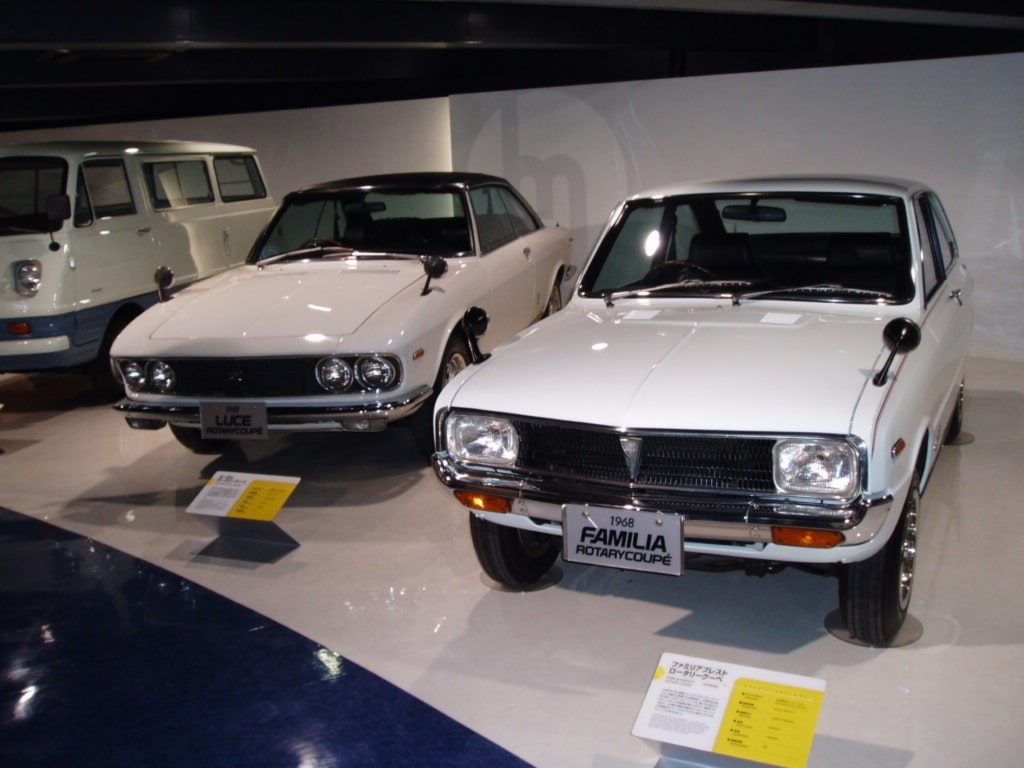
Mazda Museum Photo by Motokoka on Wikimedia Commons, licensed under CC BY-SA 4.0
Car enthusiasts might consider adding the Mazda Museum to their itinerary of things to do in Hiroshima. Mazda’s global headquarters are located in Hiroshima.
The Mazda Museum, within walking distance of Mukainada Station in eastern Hiroshima, offers museum tours, and a tour of a working Mazda assembly line twice a day. You’ll have to confirm this ahead with the museum before you arrive in person.
During the tour, which is currently only held in Japanese (read up on the museum beforehand if you don’t speak the local tongue), you’ll see the first vehicle Mazda ever built, an autorickshaw from the 1930s, along with different Mazda models produced over the decades, including the car that won the Le Mans 24-hour race in 1991.
Climb Mt. Haigamine for Spectacular Hiroshima Vistas
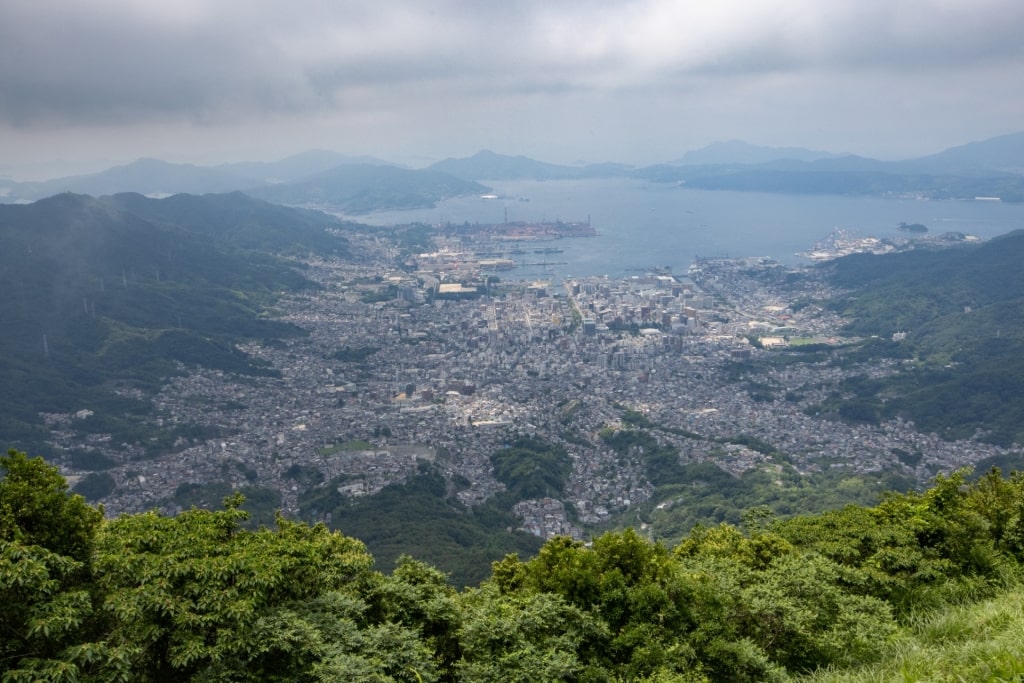
Mt. Haigamine
Mt. Haigamine, like some deity residing in the clouds, offers a wonderful chance to gaze down upon the Land of the Rising Sun.
Mt. Haigamine is located in the shipbuilding hub of Kure City, about 12 miles from Hiroshima. The circular observatory at the summit, surrounded by dense greenery, will afford you unobstructed vistas in every direction you gaze, assuming the sky is clear.
The viewing menu includes Hiroshima, Kure City, the Seto Inland Sea, and even the Shikoku mountain range in the distance.
You can drive to the peak, or else opt for a hike up the side of the mountain, which is just over 2,400 feet tall. The trek to the top should take you around an hour or so on foot.
Read: 11 Extraordinary Mountains in Japan
Dig Into Hiroshima’s Most Famous Dish, Okonomiyaki
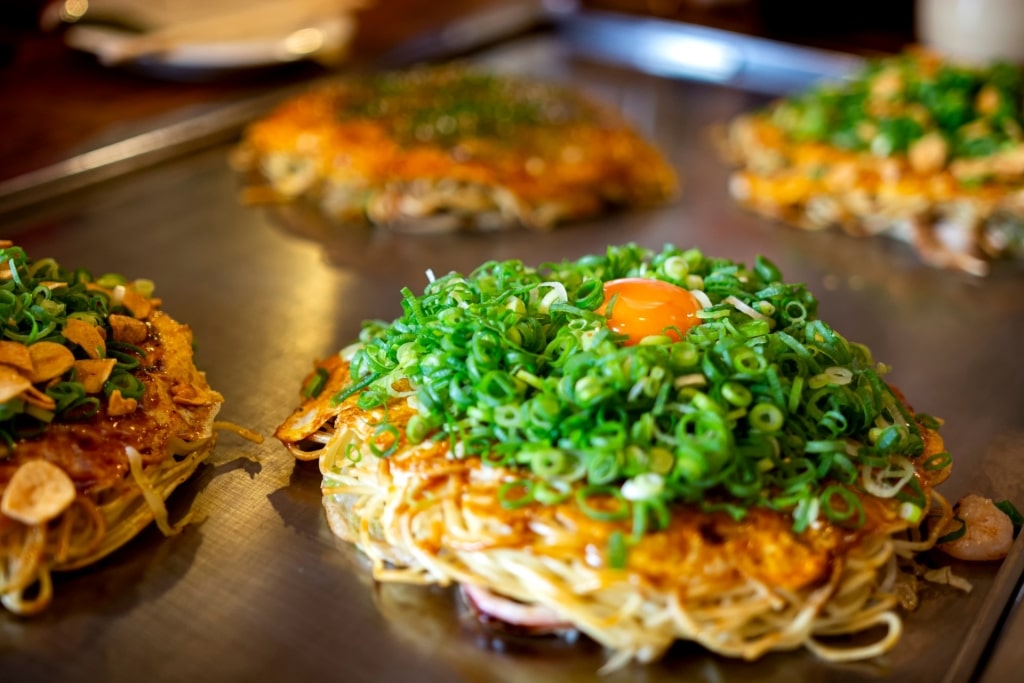
Okonomiyaki
A quick primer on okonomiyaki: Hiroshima’s famous dish is a savory fried “pancake”, often prepared in front of you on a teppan grill, with egg-batter cabbage, noodles, different protein choices (pork, squid, etc.), different savory sauces, dried seaweed, plus other tasty ingredients. Recipes can vary widely.
Osaka and Hiroshima are Japan’s most famous okonomiyaki cities. Hiroshima okonomiyaki can be found all over the region, but if you’d like a concentrated dose of okonomiyaki culture, drop by the Wood Egg Okonomiyaki Museum.
There, you can sample—and even learn how to prepare—this zesty Japanese dish and its accompanying sauces.
Visit the Little Kyoto of Aki and the Taketsuru Shuzo Sake Brewery
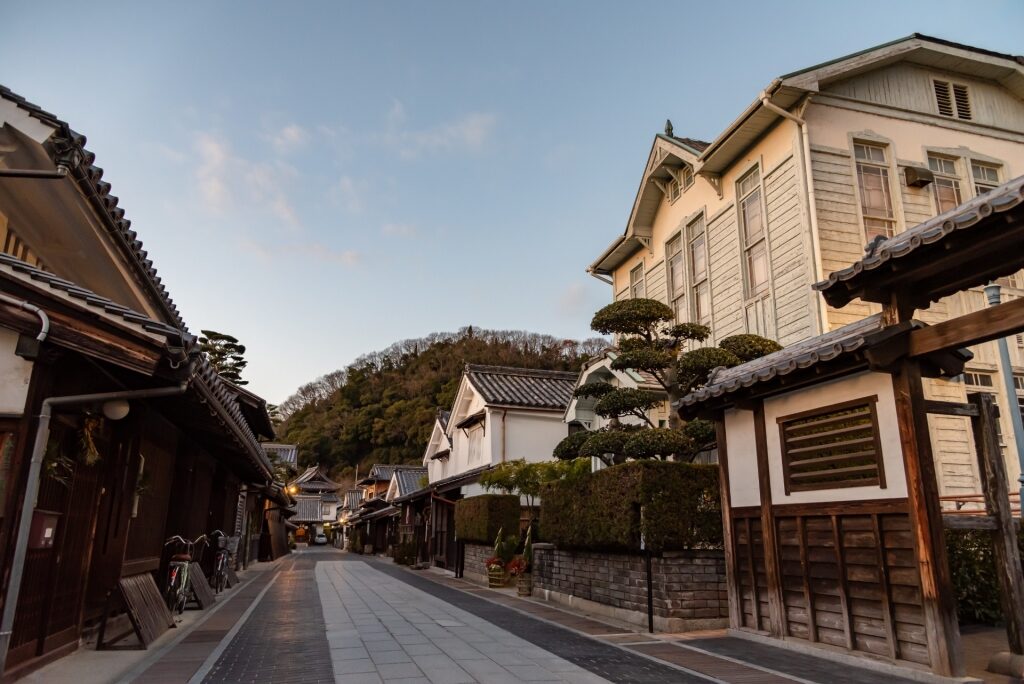
Little Kyoto of Aki
A visit to the Little Kyoto of Aki, also known as the Preserved District of Takehara, is another opportunity to step into Japan’s past.
The district highlights and preserves architecture from Japan’s Tokugawa, or late Edo period (1603–1867). You’ll see wooden houses, merchants’ buildings, kawara fired-clay roof tiles, and other historic Edo-era structures during your stroll around the Little Kyoto of Aki, and down the main street of Honmachi-dori.
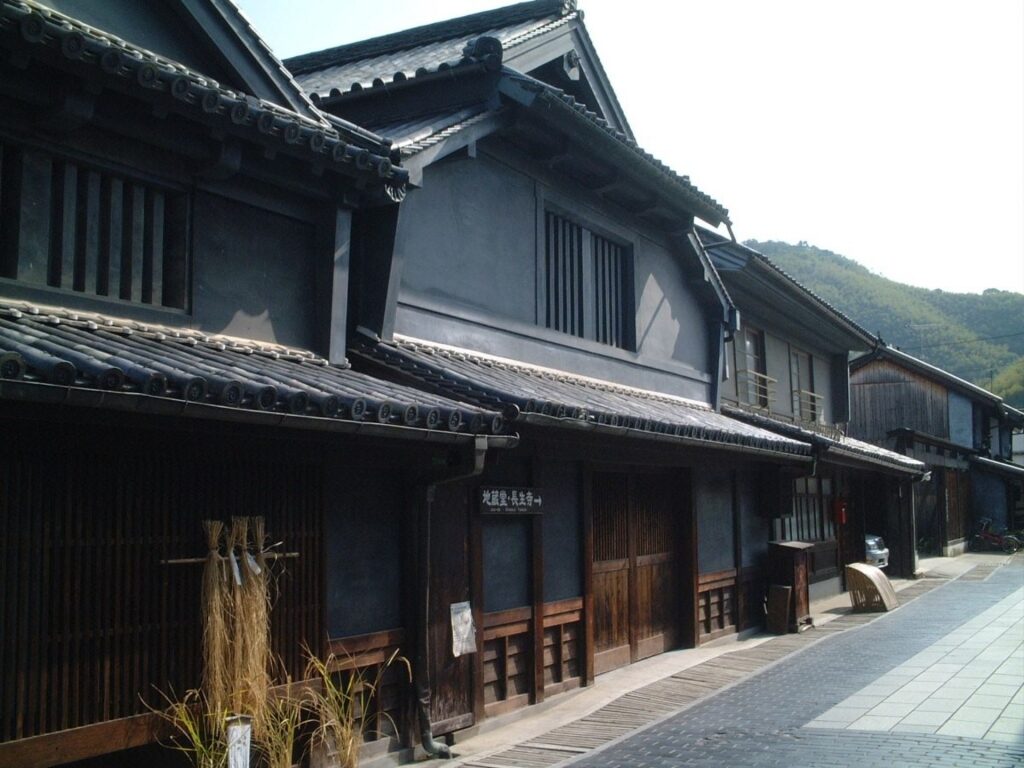
Taketsuru Shuzo Sake Brewery Photo by K.F. on Wikimedia Commons, licensed under CC BY-SA 3.0
The Yoshii family’s residence, dating back to 1691, is the former home of a prosperous salt and sake trader, and happens to be the oldest house in the district, exemplifying Edo construction techniques.
While visiting the area, stop by the Taketsuru Shuzo Sake Brewery for some insights into how sake is made, if you have time. The family running this brewery uses local ingredients, and take great pride in their operation, which you can sense when sampling their products.
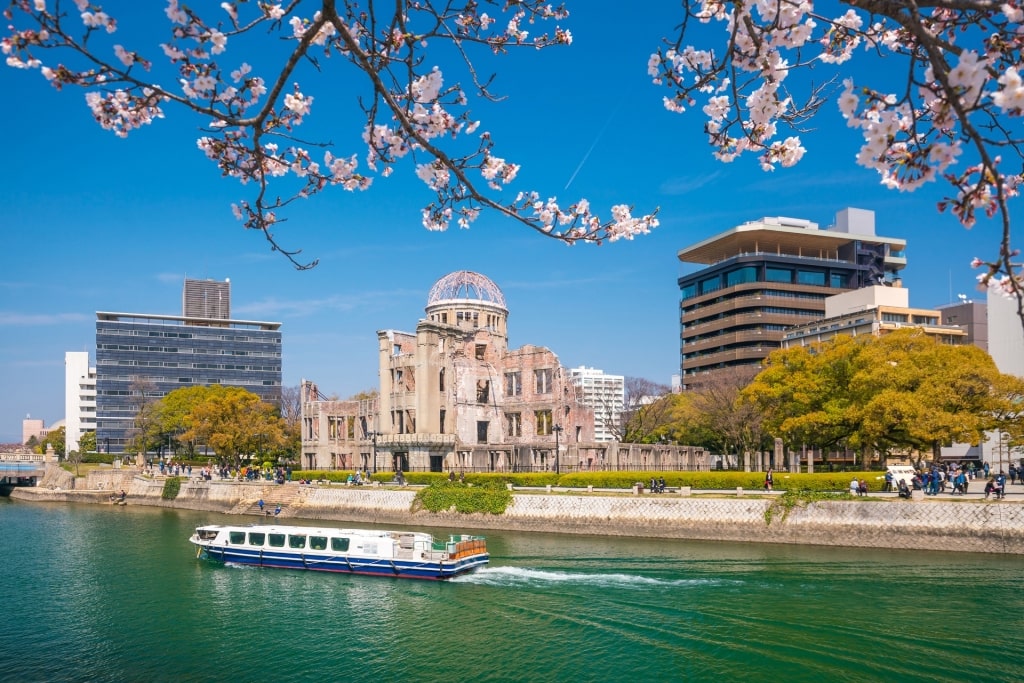
Hiroshima
With so many captivating things to do in Hiroshima, perhaps it’s time to browse Celebrity’s cruise itineraries to Japan and see this nation’s numerous cultural wonders for yourself. Explore our cruises to Hiroshima and book your next getaway today.
